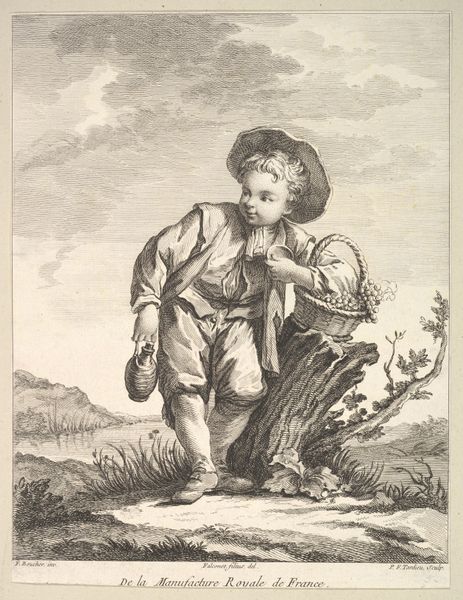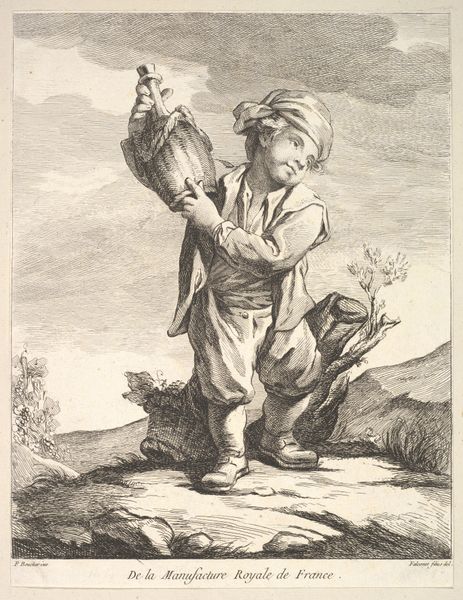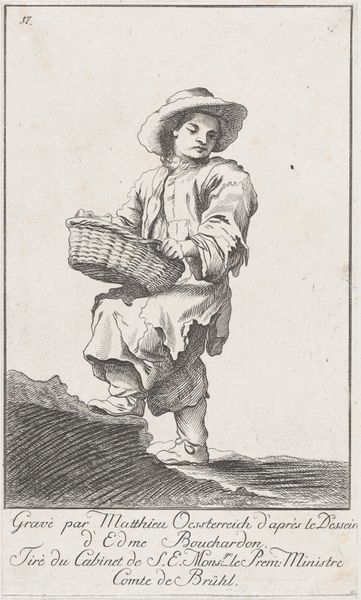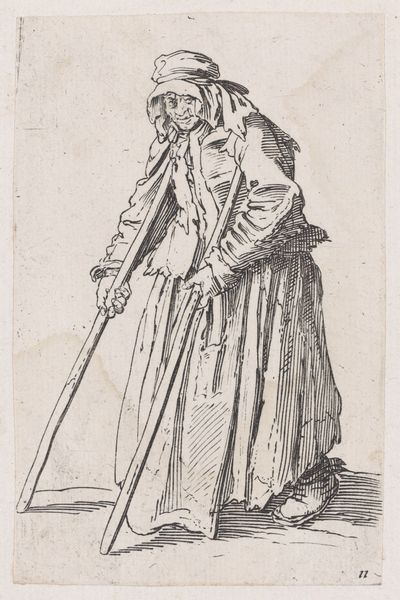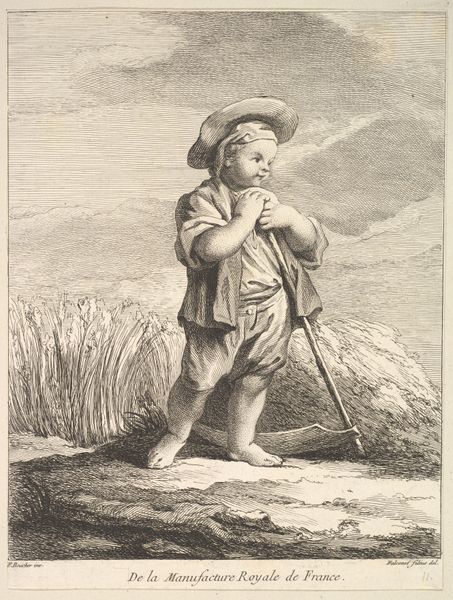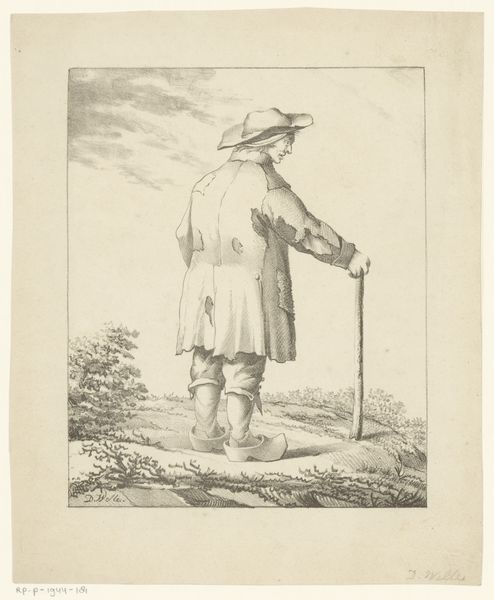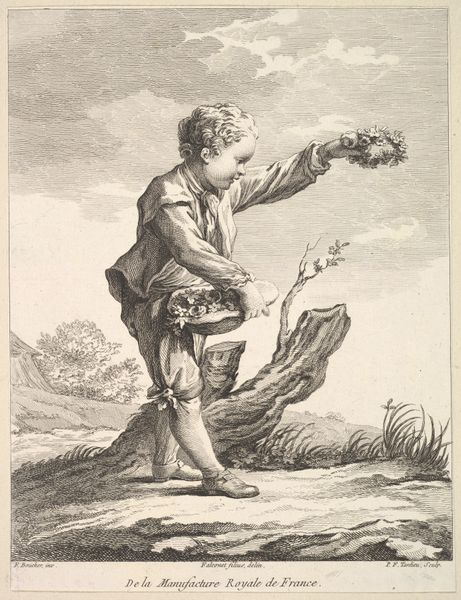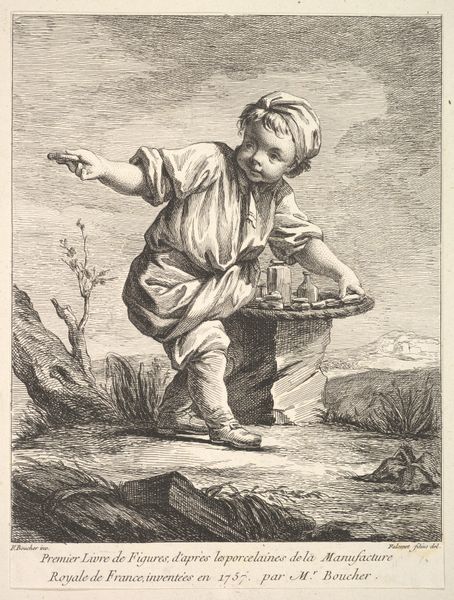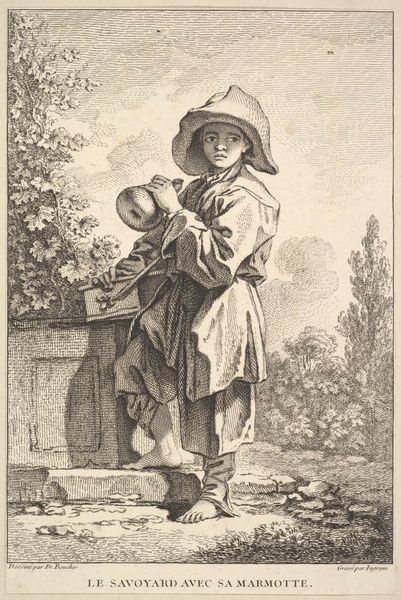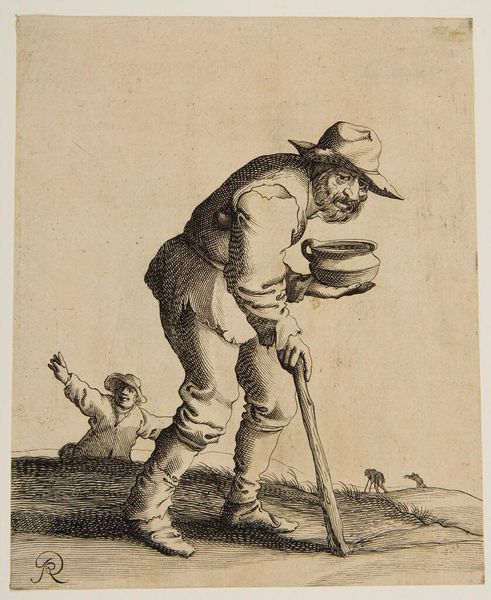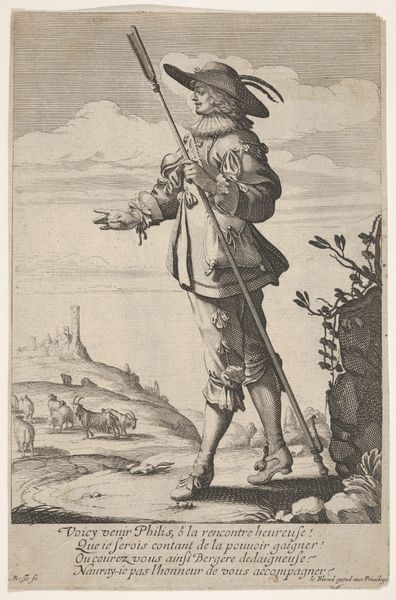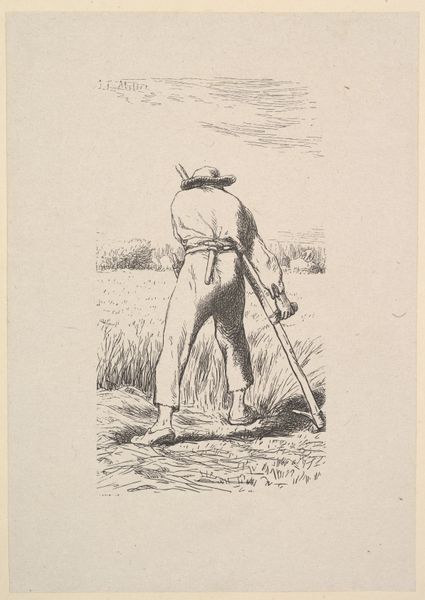
Little girl doing farm work, from Premier Livre de Figures d'après les porcelaines de la Manufacture Royale de France, inventées en 1757, par Mr. Boucher (First Book of Figures after porcelains from the Manufacture Royale de France, devised in 1757, by Mr. Boucher) 1757
0:00
0:00
drawing, print, engraving
#
drawing
# print
#
landscape
#
figuration
#
pencil drawing
#
genre-painting
#
academic-art
#
engraving
#
rococo
Dimensions: Sheet: 9 3/4 x 7 1/2 in. (24.8 x 19 cm)
Copyright: Public Domain
Editor: This engraving, "Little girl doing farm work," by Pierre Etienne Falconet from 1757, strikes me with its depiction of labor in what looks like an idealised pastoral setting. The young girl seems almost too dainty for the work. What's your interpretation? Curator: It’s crucial to see this image within the context of 18th-century French society. The image promotes the Royal Manufacture; but it’s worth considering *whose* idea of labor this is. This idyllic presentation often served the interests of the elite, masking the harsher realities of rural life for the majority. Do you notice how her bare feet seem less about hardship and more about an innocent engagement with nature? Editor: That's interesting; it's like the image is playing with the idea of rural simplicity, but not necessarily showing the truth of it. So, it’s more about conveying a certain *feeling* than documenting a reality? Curator: Exactly. Consider the intended audience. These images, connected to porcelain production, would circulate among a wealthy clientele. How would you say this depiction of rural life confirms or challenges their worldview? The clean lines, the pastoral scene—everything speaks to an ordered world where even labor appears elegant and untroubled. It reinforces their position, perhaps relieving some of their social anxiety. Editor: I see. So it's not just an innocent picture, but part of a larger system. By idealising labour like this, the image subtly legitimises the social hierarchy of the time. It also reframes the economic base that allows the royal manufacture to happen. Curator: Precisely. It invites us to consider how images play a role in the politics of representation. Editor: This really opens my eyes to how much these images were involved in shaping people’s understanding of society and the roles of labor and nobility. I'll definitely look differently at this artwork, taking into account its social effects. Curator: Good. Keep asking yourself, "Who benefits from this representation, and how?". The true image lives behind its surface.
Comments
No comments
Be the first to comment and join the conversation on the ultimate creative platform.
